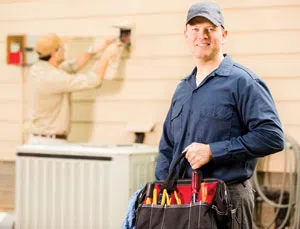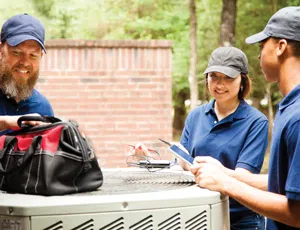Strategic diagnosing and troubleshooting reduces both call backs and time wasted accomplishing nothing.
One of the main points of an effective and strategic troubleshooting program is reducing callbacks.
It also is important, however, to reduce time wasted on activities that do not benefit a technician’s ability to efficiently arrive at the core problem and then solve it.
Worse yet is the additional time wasted to apply ineffective solutions that can require even more time to remedy.
For example, adding additional refrigerant charge when it may not be required can result in serious damage to the system down the road — and losing a compressor a few weeks after a servicing visit is not likely to reflect well on the contractor in the eyes of the customer.
The good news is that an effective onsite procedure will reduce both call backs and time wasted accomplishing nothing of value.
The Service Checklist
To effectively reduce the chance of spending time onsite with little accomplishment to show for it, a strategic approach that guides the technician and provides an effective routine is essential. At the same time, any program must be flexible enough to allow for the technician to apply their own knowledge rather than just blindly following a paint-by-number approach.
Ultimately, the goal should be to allow the technician to arrive and gather key value points along with several observations that together will provide insight into how the system is performing. In the case a system is not operational, the right strategy will allow for the proper component replacement and start-up procedure so that the true underlying reason for the failure can be corrected, giving the system the best chance of meeting performance expectations.
The foundation for this is the service checklist and, its partner, the startup and commissioning checklist.
The purpose of these checklists is to ensure that all relevant points and observations about a job are noted so that a complete picture of the service call is obtained.
The necessity of this stems from the simple fact that just because a system is operating and blowing cold air does not mean it is removing moisture which can also be a big part of the load.
Alternatively, just because it is obvious that a compressor is dead does not mean that simply replacing it will fix the leak, poor oil return or low voltage that killed it in the first place.
There are key things that can be noted and acted upon to improve operation and/or guarantee that the system will operate for years to come after the compressor is replaced.
Poor dehumidification when corrected will result in far better comfort for the system owner, and eliminating a call back on a compressor replaced months ago will only benefit business and referrals. Doing it correctly the first time will save a lot of time both at the time of service and in the future.
For this program to be truly effective and yield the most value, however, there must be more effort put forth than just the creation of a sheet with points to check and then making sure that each technician carries one in their truck.
Rather, a concerted effort must be made to educate and inform each technician so that they fully understand the value of each of the checklist points and how they impact the success of a job on system operation.
When a technician understands the relevance of a measurement, they are more likely to take the time to measure correctly.
Training
If you have more than one or two technicians on staff, chances are that they will fall along a varying spectrum concerning skills and experience. To address this and ensure that technicians benefit as much as possible, technicians should undergo training that addresses three key skills:
- Diagnosis of the problem(s).
- Proper installation and commissioning practices.
- Proper documentation of a job, so that there is a recorded history of what took place.
These skills, along with the use of the service form, will help ensure that the time spent on the job site from start to finish is spent in the most productive manner possible.
This program works because all aspects of it are closely tied together by the methodology used to execute them.
This means that a program based on a core system of measurements and procedures can greatly help bring technicians up to speed and reduce the chance that they overlook or incorrectly interpret symptoms.
It is a hidden training program that teaches the skills that schools do not have time to cover and ensures that you reap the benefits from it as quickly as possible.
If we use an example to make the point, it would go something like this:
When the technician shows up onsite, they should discuss with the customer what issues they are experiencing, asking strategic questions like when the issue first took place and if there were any circumstances that occurred right before such as prior service, etc.
Next, they should do a visual inspection of the unit noting anything that stands out. While this would include obvious points, such as the type of metering device — TXV, piston EEV, etc., it could also even extend to things like excess foliage from bushes growing around the outdoor unit or anything else that may affect performance.
From this point, the service call should continue to follow the strategy of gaining as much information as possible.
What is the voltage value to the unit? If the system is operating, what are the refrigerant temperatures and pressures? Is the airflow through the condenser and evaporator at the recommended values? If the unit is not operating, is it due to a component failure or something like a pressure control that is set to an incorrect value?
Once this point is reached, if the unit is operating, there should be sufficient information to ascertain how well it is operating.
If it is not working, there should be enough information to identify what is immediately causing the unit to not operate, such as an open control transformer.
Aside from failed components, it can also offer some indications to any external causes like airflow issues that may be causing excessive discharge pressures or 186 volts to a 230-volt compressor.
At this point, the correct servicing options should be clear and implemented — eliminating potential wasted time replacing parts that shouldn’t be or missing key pieces of information that would have led to a proper diagnosis.
In addition and complementary to the service checklist, technicians should be encouraged to utilize the latest online tools to access manufacturers’ information such as data sheets, performance data, and installation and servicing notes.
Smart phones and tablets can be preloaded with the latest apps and links, and updated as needed to ensure quick access to valuable data. Making a phone call or searching online for information that should be readily available is a great example of time waste.
Remote monitoring of systems and the ability to access smart devices using the Internet of Things, while around for quite a while in food retail/supermarket applications, it is also becoming more common in commercial refrigeration as well.
The ability to monitor several parameters in equipment such as vending machines and restaurant equipment before a technician can get onsite can provide key information very quickly and allow for a shorter servicing time since less time will need to be spent on diagnosis.
This is especially important in terms of gaining an accurate and detailed history of how the equipment was performing before it stopped working.
Another valuable tool is the use of Bluetooth-enabled sensors combined with a tablet that can display a variety of refrigerant and air side pressures and temperatures as well as voltage and current values.
This allows one technician to simultaneously monitor different areas of the system, which is particularly useful when dealing with large split systems with remote components.
Different Values of Time
It is important to not confuse reducing time waste with spending less time on a task; rushing is never a good way to reduce time waste unless you are in the business of doing as many jobs as possible regardless of the results achieved.
To save a few extra minutes onsite, consider what can be done before a technician and the truck head out for the day — notably through a little preparation, taking advantage of new truck stock opportunities and minimizing time in traffic.
For example, consider whether the truck stock of required tools and supplies are all on-board in a way that allows quick access?
Dedicated truck stock components for servicing is just one good opportunity for saving time. If servicing ice machines is part of doing business, a universal ice machine TXV kit will save the drive to a wholesaler. It also reflects well on your technician, and therefore your business, when the TXV can be replaced on the spot and the restaurant can return to making ice in record time.
The same premise goes for residential air-conditioning and commercial refrigeration businesses. Keeping stock of dedicated, universal kits will allow for more time spent repairing equipment and finishing a job than driving to and from suppliers. It is hard to overestimate the amount of time these can save in large metro areas.
While the service documentation and step-by-step procedure lists are important, they can only serve as a guide. The technician must understand the importance and relevance of each of the steps as well as how best to effectively take measurements.
Doing the exact required steps how and when they should be will save time and allow the technician to properly prepare a course of action.
Furthermore, if they know what is required, they will make sure they have what is needed and save needless trips to the truck.
Guiding your technicians through the system and highlighting how the various values are measured will help ensure that when it comes time to do it, they are up and at it and getting it done.
Measuring the values of superheat and subcooling are a prime example as is measuring static pressure. It is important to measure correctly and at the right time so to avoid measuring at points and times that can give a false reading.
In closing, to reduce time waste, focus your servicing strategy on:
- Both the theory of how systems operate and what influences their performance. Never underestimate a comprehensive understanding of the basics of superheat and subcooling. These values, along with airflow and temperature, can effectively communicate everything that is going on in a system.
- The importance of taking a strategic step-by-step approach to troubleshooting and start-up and commissioning. This will both catch key information that will prevent premature component failure and will also eliminate time wasted on unnecessary actions that provide little benefit.
- A goal of spending as much quality time as possible by minimizing time spent going to suppliers, making return trips to the shop and relying on outside technical support.
- Proper onsite information collection, including thorough customer communication such as asking all of the right questions. Focus on air flow pressure and temperature, refrigerant P&T, electrical measurements and doing a quick but thorough general inspection.
As systems get smarter and diagnostics and troubleshooting techniques improve, you’ll see the results in your bottom line.





